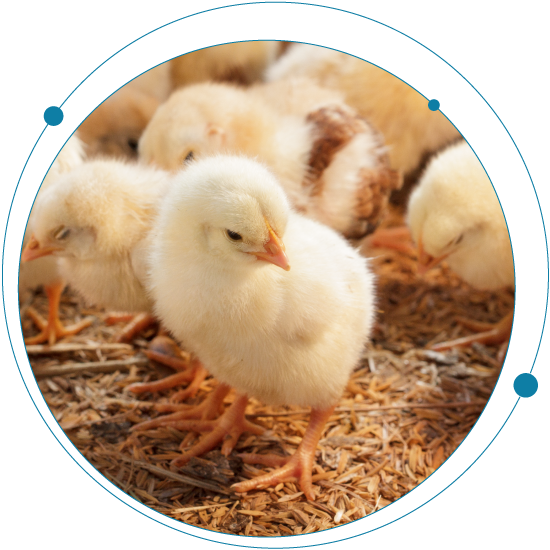 Read Time: 3 minutes
Read Time: 3 minutes
While it sometimes seems questionable whether humanity and modern technology can coexist, technological advances in science can help pave the way to more compassionate business practices.
Consider the poultry industry, for example, where male chicks are viewed as worthless—they can’t lay eggs, and they fatten up too slowly to be sold as meat. So, soon after they hatch, they are destroyed, often using brutal means. This disturbing practice, called chick culling, has been under fire from animal rights advocates for decades, and it is now facing global bans.
But what if there were a way to determine the sex of an egg before it hatches, so more humane sorting practices could be used? A new screening process makes this possible while also supporting more efficient egg production by using innovative mass spectrometry.
Efficient production
Packed with high-quality protein, eggs are considered one of the healthiest foods on the planet, and efficient production has made eggs a low-cost essential for most of the world’s population.
In hatcheries, preferences for food and space go to hens, who are valued for their egg production. When their egg output slows, their useful life is over, and they’re disposed of as pet food or animal feed, or they are simply landfilled. As for the 6.5 billion male chicks hatched every year, they’re considered economically useless from the start, as the cost of feeding and housing them is higher than the return on selling them as meat. These male chicks are disposed of shortly after hatching via the practice of chick culling.
Ethical production
The harsh practices surrounding chick culling—including asphyxiation and maceration—stand in stark contrast to images of cute and fuzzy baby chicks. As expected, chick-culling practices have drawn the attention of animal rights activists for decades.
Countries around the world are taking action. In May 2021, Germany passed a law banning the large-scale killing of male chicks in the egg-laying industry as of 1 January 2022. The poultry industry in France has until the end of 2022 to stop the practice. United Egg Producers, an industry group representing hatcheries that produce 95% of all eggs in the US, called for the end of culling as soon as “economically feasible” and as soon as an alternative is “commercially available.”
In planning a more ethical future, the industry proposed three alternative approaches to culling day-old male chicks:
- Identify a mechanism that can imbalance the sex ratio in favor of females.
- Develop tools for determining the sex of the embryo in ovo, prior to hatching.
- Develop strains where female chicks are raised to be egg-laying hens and male chicks are raised for meat.
The In Ovo solution
With the help of the local academic community, the Dutch company In Ovo took steps to find a solution. The researchers sampled eggs of various colors and breeds seeking biomarkers that could be used to gender type them. After eventually finding one, they went looking for a rapid, cost-effective screening technique for the biomarker.
Since the hatchery application is demanding in terms of workflow speed, the researchers initially dismissed mass spectrometry as too slow for their needs. They then learned about the Echo® MS system from SCIEX, an ultra-high sample throughput system that uses Acoustic Ejection Mass Spectrometry to introduce samples to the SCIEX Triple Quad 6500+ mass spectrometer. This approach significantly increases analysis speed and eliminates the need for traditional liquid chromatography, and it proved to be an ideal fit for their solution: a high-throughput gender-typing system called Ella.
In Ovo has now installed Ella in one of its hatcheries in the Netherlands, where throughput is targeted at 10,000 eggs per hour. After nine days of incubation, eggs can be sorted as male or female during a 10-minute process. Female eggs are returned to the incubator and hatched while male eggs are removed from production, spray dried and used as a source of high-quality protein for pet foods. The process is currently at 95% accuracy with a target of 99% as the process is refined.
Going forward
High demand for the system is expected, especially as its speed and accuracy continue to improve. The heart of the Ella system—the Echo® MS system—is not only an exceptionally fast mass spectrometer, it can also be used in the demanding hatchery environment. Soon, one new Ella machine will help enable the hatching of five million hens per year.
Resources
https://www.newfoodmagazine.com/webinar/147070/solving-an-age-old-issue-in-the-poultry-industry/
https://www.newfoodmagazine.com/article/151258/an-alternative-to-egg-culling/
RUO-MKT-18-14670-A






 Contact Support
Contact Support
0 Comments